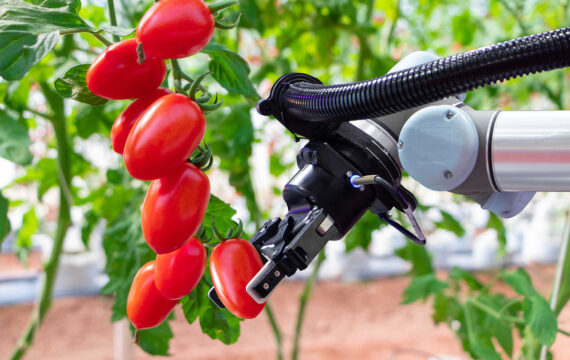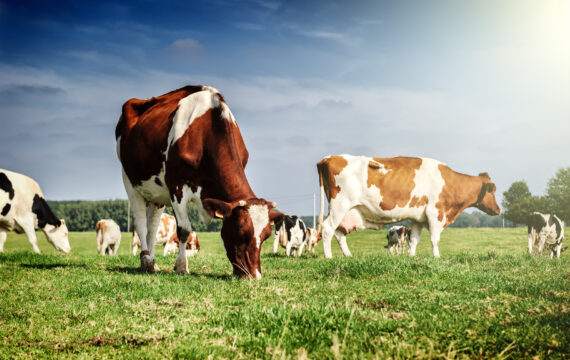Sustainability is still one of the major trends in agribusiness. The reason is that agriculture produces one-quarter of global greenhouse gas (GHG) emissions. Today, agricultural companies want to take responsibility and reduce that share. In addition, consumer demand for organic and environmentally friendly produce is rising. This is forcing agribusinesses to start farming in a more sustainable way.
Vertical farming technology seems to be an answer. And in short, it is. But only when you use it correctly. Read further to find out how to make growing plants in vertical farms sustainable.
Vertical farming technology and controlled environment agriculture
Vertical farming is more than just stacking trays with soil and seeds on top of each other. And it isn’t about building a greenhouse in a shipping container. In reality, it’s all about nurturing plants in a perfect environment.
What is controlled environment agriculture?
In controlled environment agriculture (CEA), farmers maintain optimal growing conditions for crops by monitoring and controlling vital parameters such as temperature, lighting, and water use. Controlled environment agriculture allows farmers to grow green produce all year long, no matter the season. But what’s even more important is that it saves significant resources, since you always use only the exact amount needed of a given resource.
Benefits of controlled environment agriculture

How vertical farming works
How does vertical farming work? Vertical farming, or vertical agriculture, is a subset of the CEA method. It takes the concept of maintaining optimal growing conditions and marries it with a vertical indoor setting. The result is a vertical farm with crops growing on top of each other and environmental parameters controlled by advanced technology. Such farms can wisely use all resources, including soil, water, and chemicals. In fact, an indoor vertical farm uses approximately 95% less water than a traditional farm. So yes, that combination was made in heaven.
Reducing the environmental impact
Precise use of resources is a way for agribusinesses to become more environmentally friendly. The fewer resources farming consumes, the fewer GHG emissions it produces. Vertical farming technologies allow for growing more plants per square acre of land while recapturing and recycling irrigation water. Moreover, a vertical farm that can be set anywhere cuts the need for transportation.
Differences between several types of farming used to grow lettuce

Source: How vertical farming is part of a “multi-agriculturalism” food system
Vertical farming technologies 101
Taking care of a vertical farm isn’t possible without technology, as the controlled environment agriculture approach demands constant crop management. That can be achieved only thanks to advanced solutions and smart systems. Let’s take a look at the necessary components of a vertical farm and the CEA approach.
Essential components of a controlled environment system

Source: Is vertical farming the future of urban agriculture
Artificial lighting system
Any indoor farming technology largely depends on the artificial lighting system. So does a vertical farm. It needs a smart horticulture lighting solution that can adjust light intensity according to plant conditions, since every stage of growth requires a different intensity of light. An indoor farming lighting system can use either high-pressure sodium lights, LED lights, or fluorescent grow lights. LED-based lighting, however, is the most common. Compared to other options, LED lighting uses less electricity and produces less heat.
Automated dosing or delivery system
Since vertical farming often goes hand in hand with aeroponics, aquaponics, and hydroponics, a dosing system becomes a must. The automated smart solution has to monitor pH, EC, and temperature in real time. Only by having such data will the system know how to optimize the nutrients. An automated dosing solution ensures the precise use of resources and prevents crop loss due to overdose or underdose of nutrients.
Sterilization system
In any indoor farm, a sterilization system is vital. It cleans off the surfaces and prevents pest infestations. In addition, the system ensures compliance with international food safety standards such as BRCGS 8. Farmers can establish a sterilization system using different methods: UV-C sterilization, ozone sanitation, and chemical disinfection are the most common.
Airflow and air control systems
It’s impossible to grow plants indoors without proper ventilation. An air control system is in charge of that. It ensures constant airflow. At the same time, the automated system monitors air quality parameters, such as humidity, CO2 concentration, and temperature. It adjusts the parameters to the current needs of crops in order to create optimal growing conditions. For instance, it dehumidifies the room when needed.
What advanced tech solutions to use on a vertical farm
Monitoring and controlling crop growing conditions 24/7 isn’t possible without using tech solutions. Advanced technologies help farmers check and update environmental parameters in real time while saving resources. Even more, some solutions can improve crop yield. Let’s take a look at types of technology vertical farming uses.
Automation and robotics
Vertical farming needs automation. Because the hard truth is that following the CEA approach requires a lot of effort. In this case, process automation helps farmers reduce the need for manpower. Automated smart systems ensure optimal growing conditions for crops by adjusting according to the parameters. On top of that, robotic solutions can perform complicated tasks such as seeding, harvesting, and packaging.
Automated technologies are fast and efficient. They are less prone to mistakes than humans. Moreover, they perform tasks with great precision, which saves resources.

IoT
The Internet of Things(IoT) is at the heart of vertical farming technology. No vertical farm system is possible without it. The reason is that connected sensors enable constant monitoring of environmental parameters. Take lighting, humidity, and CO2 levels, for instance. IoT devices collect valuable data and transmit it to the cloud, where it’s stored and processed. Later, each automated system can use the outcomes to trigger actions.
Moreover, connected devices help farmers monitor the state of crops. They collect data on the plants’ health. An application can compare the input with normal health indicators and warn farmers if the state of crops is getting worse.
AI and ML
Artificial intelligence (AI) and machine learning (ML) algorithms are responsible for data processing. They analyze the collected input from IoT devices and turn it into valuable insights. Visualized and processed data becomes indicators for automated solutions. For instance, an air control system cools down the air when the temperature is defined to be too high for the current growth phase.
Computer vision depends on AI and ML algorithms too. The technologies enable image processing for evaluating crop health. If the state of crops is getting worse, an AI solution will spot it early on and alert farmers or ask the system to take certain immediate actions.
In addition, AI technology can perform predictive analytics. The solution can analyze growth patterns and farming processes. Based on this data, the AI can give recommendations on what to improve. The smart solution can even develop sustainable resource consumption scenarios. The result of AI-driven decision-making would be highly efficient farming and better crop quality.
Future of vertical farming
The vertical farming market is expanding rapidly. It reached 5.5 billion US dollars in 2020. And by 2026, it is expected to reach approximately 20 billion US dollars.

Source: Projected vertical farming market worldwide in 2019 and 2025
Vertical farming technology that uses less water, less space, and fewer pesticides will get more and more common. On its way to global popularity, however, it’s got some challenges to face. Not all green produce is economically viable to grow in a vertical farm. Lettuce, microgreens, basil, mint, kale, and strawberries fit the CEA approach the best. Cultivation of other herbs and vegetables, such as grains, consumes too many resources. A vertical farm still needs a lot of research and technology improvements to make growing all sorts of crops profitable.
Beyond that, in the future, we can expect more governmental initiatives in the CEA field. Agricultural policies need to be adapted to cover vertical farming. The Singaporean government, for example, is already working with farmers to update its current agricultural policies and provide funding to agricultural FoodTech startups.
The final word
With the climate change threat growing every year, agriculture has to get ready for more problems ahead. Fortunately, vertical farming technologies allow for cultivating plants no matter the weather or season. In fact, vertical farming has become both the cure and the solution to the climate problem.
A smart climate-controlled vertical farm uses resources precisely. It helps farmers reduce their GHG emissions. With AI and automation, the farming processes in a vertical farm are optimized. Even more, an AI solution can constantly give advice on further optimization based on real-time data.
And while vertical farming technologies allow for growing plants whenever it also allows for farming wherever. Apart from traditional agriculture, a vertical farm can be set in a crowded city. Local produce eliminates the need for transportation and reduces the carbon footprint as well.
The future of vertical farming technologies looks bright. Don’t miss the chance to become a part of this agricultural industry success story! Contact our experts to receive a professional consultation on your vertical farming technology project. Subscribe to the newsletter below to keep up with the latest industry news.



